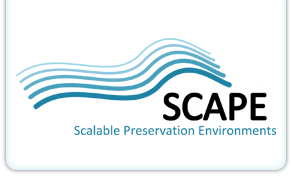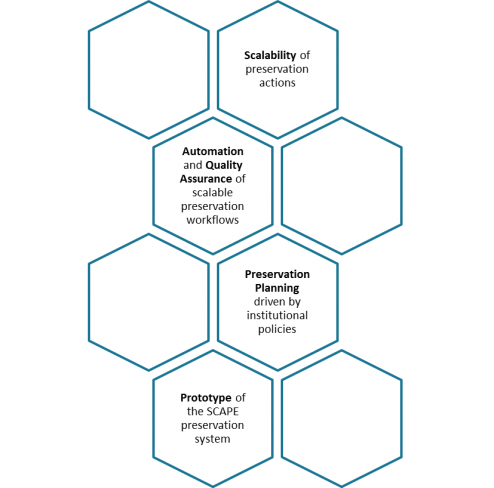Based on the challenges confronting its stakeholders, the SCAPE project addressed the following scientific and technical objectives:
1) Scalability. SCAPE addressed scalability in four dimensions:
- Number of objects
- Size of objects
- Complexity of objects
- Heterogeneity of collections
The project extended repository software functionality to enable storage, management, and manipulation of very large objects (e.g., multi-gigabyte video streams) and very large numbers of objects (hundreds of millions). SCAPE improved the ability of a number of existing preservation tools to manage a variety of container objects and to recognize diverse object formats.
2) Automation. Automated workflows are state of the art; SCAPE worked towards making these workflows scalable. SCAPE preservation workflows are simple to design, making use of the well-known Taverna workbench, and are deployable and executable on large computational clusters. Automated workflows for quality assurance accompany the preservation workflows. SCAPE also introduced automation and scalability in technology watch and preservation planning.
3) Planning. SCAPE extended the award-winning preservation planning tool Plato to enable institutions to answer core preservation planning questions. For large heterogeneous collections, Plato allows a curator to determine which tools and technologies are optimal for preservation within in a given context, defined by institutional policies. Additionally, SCAPE advanced the state of the art by delivering a catalogue of generic policy elements and a semantic representation of these elements in a machine-understandable form that can be leveraged by the planning and watch components, enabling automated policy-driven planning.
4) Integration. SCAPE produced an integrated preservation system prototype. SCAPE components are available for productive use.



